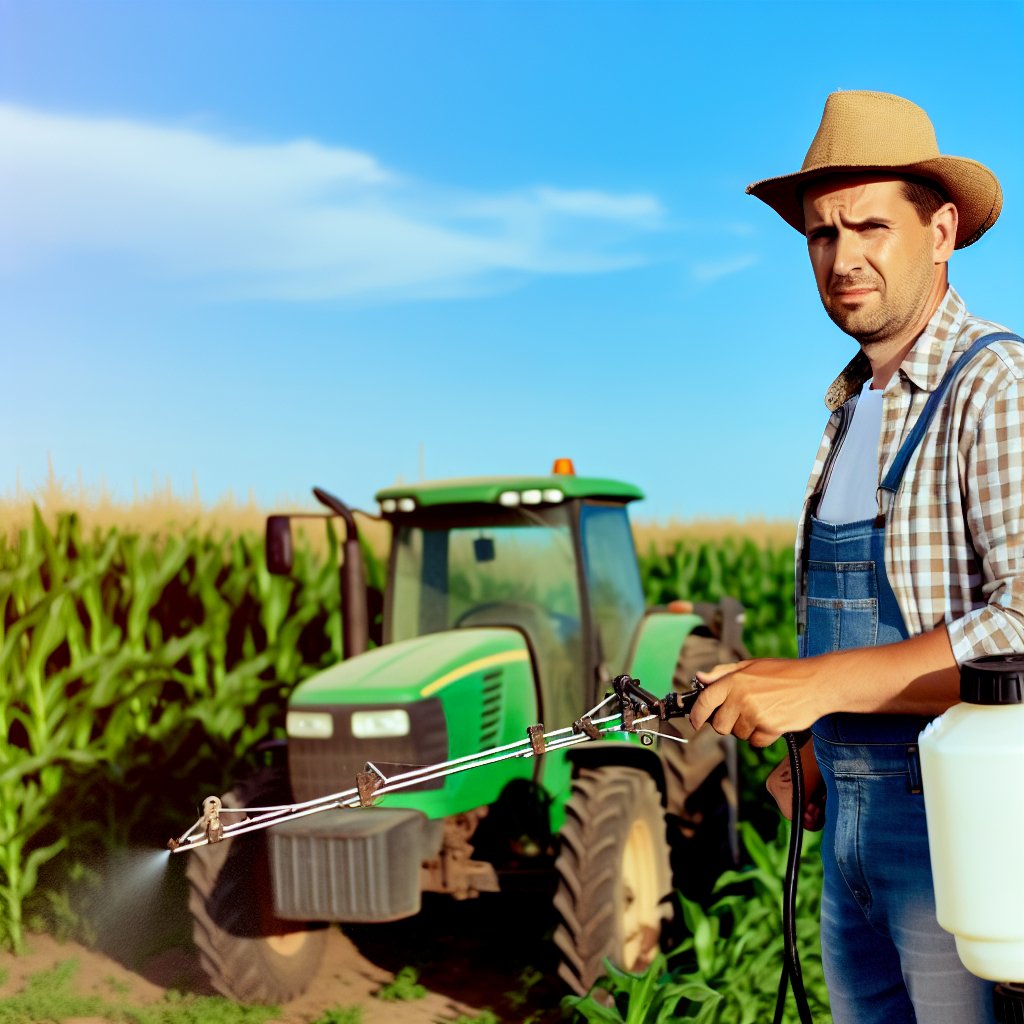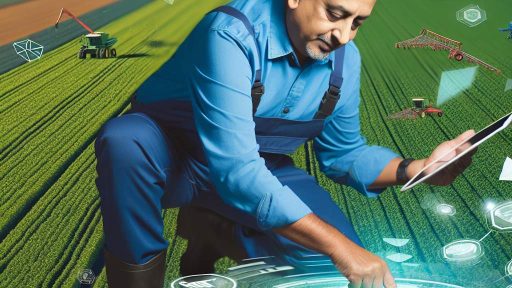Introduction to Cost-Effective Pest Control in Farming
Pest control is crucial for successful farming.
A well-planned pest management strategy protects crops effectively.
Farmers face challenges with pests that threaten their yields.
Thus, cost-effective solutions play a significant role in farming success.
The Importance of Cost-Effective Solutions
Farmers often operate on tight budgets.
Cost-effective pest control reduces expenses while maintaining crop health.
Investing in affordable options can yield higher profits in the long run.
Moreover, these solutions help in managing resources wisely.
Understanding Common Pest Control Methods
Farmers often use various pest control methods.
These can include chemical, biological, and cultural approaches.
Understanding the pros and cons of each method is essential.
Chemical control can be effective but costly if not managed well.
Meanwhile, biological methods offer a sustainable alternative.
Implementing Integrated Pest Management
Integrated Pest Management, or IPM, combines multiple strategies.
This approach minimizes the use of chemicals and maximizes effectiveness.
Transform Your Agribusiness
Unlock your farm's potential with expert advice tailored to your needs. Get actionable steps that drive real results.
Get StartedFarmers can tailor IPM practices to specific pests and crops.
Regular monitoring is crucial to successful IPM implementation.
Farmers should adjust their tactics based on pest populations.
Utilizing Technology for Pest Monitoring
Modern technology aids farmers in monitoring pests efficiently.
Sensor-based systems can provide real-time data.
This information helps in making informed pest control decisions.
Additionally, mobile apps can enhance pest identification and tracking.
Incorporating Natural Predators
Natural predators can help control pest populations effectively.
Farmers can attract beneficial insects to their fields.
Examples include ladybugs and lacewings that prey on harmful pests.
Maintaining a balanced ecosystem promotes these beneficial insects.
Exploring Organic Pest Control Options
Organic farming offers various pest control methods.
Natural pesticides and companion planting are popular techniques.
These methods minimize chemical use and enhance soil health.
Farmers should explore organic options that fit their farming practices.
Understanding the Economic Impact of Pest Damage
The Cost of Pest Infestations
Pests can cause significant financial losses for farmers.
The damage to crops leads to decreased yields.
Insect infestations can worsen the quality of produce.
This often results in reduced market prices for affected goods.
Consequently, high pest populations can require costly interventions.
Factors Contributing to Economic Loss
Several factors influence the overall economic impact of pests.
The type of crop determines susceptibility to different pests.
Additionally, local climate conditions play a crucial role.
Environmental changes can lead to increased pest outbreaks.
Showcase Your Farming Business
Publish your professional farming services profile on our blog for a one-time fee of $200 and reach a dedicated audience of farmers and agribusiness owners.
Publish Your ProfileMoreover, a farmer’s pest management strategies significantly affect costs.
Long-Term Economic Implications
Persistent pest problems may lead to long-term financial strain.
Repeated crop failures can force farmers to seek alternative livelihoods.
This shift often results in reduced agricultural reliability in the region.
Moreover, over-reliance on chemical pesticides may increase costs over time.
Long-term pest management investments are crucial for sustainability.
Impact on Local Economies
Pest damage does not only affect individual farmers.
Agricultural losses can disrupt local economies significantly.
Communities relying on farming may face economic downturns.
Job losses can occur within the agricultural sector.
This can affect local businesses and service providers as well.
Mitigating Financial Risks
Farmers can take proactive steps to reduce economic impacts.
Implementing integrated pest management (IPM) can help.
Utilizing resistant crop varieties also minimizes risks.
Moreover, fostering biodiversity can naturally control pest populations.
Investing in education about pest risks is crucial for effective management.
Natural Pest Control Methods
Advantages of Natural Pest Control
Natural pest control methods offer several benefits to farmers.
They are often more cost-effective compared to chemical alternatives.
These methods promote environmental sustainability and biodiversity.
Additionally, they can improve soil health and reduce pollution.
Farmers can also build resilience against pest outbreaks over time.
Techniques for Natural Pest Control
Farmers can employ various techniques for effective natural pest control.
One popular method is biological control, which uses natural predators.
For instance, ladybugs can help control aphid populations.
Another technique involves using companion planting.
Certain plants can naturally repel pests or attract beneficial insects.
Crop rotation is also a valuable strategy to disrupt pest life cycles.
Creating a Natural Pest Control Plan
A well-thought-out plan can enhance pest management efforts.
First, assess the specific pests affecting your crops.
Next, identify potential natural predators and plants that can help.
Monitor pest populations regularly to track their levels.
Moreover, adjust your approach based on seasonal changes.
Success Stories from Farmers
Numerous farmers have seen success using natural pest control methods.
For example, Maria Torres from California practices companion planting.
She combines marigolds with her vegetable crops to deter pests.
Similarly, Greg Allison in Florida uses nematodes to control root pests.
These farmers illustrate that natural methods can yield effective results.
Gain More Insights: Leveraging Technology To Improve Crop Yields
Biological Pest Control: Utilizing Predators and Parasites
Understanding Biological Control
Biological pest control uses natural predators and parasites to manage pests.
This method reduces reliance on chemical pesticides.
Showcase Your Farming Business
Publish your professional farming services profile on our blog for a one-time fee of $200 and reach a dedicated audience of farmers and agribusiness owners.
Publish Your ProfileFarmers gain sustainable solutions through biological control strategies.
Types of Biological Control Agents
Several types of biological control agents exist in nature.
- Predators actively hunt and consume pests.
- Parasites live on or within pests, eventually killing them.
- Pathogens, such as fungi and bacteria, infect and harm pest populations.
Selecting the Right Agents
Selecting the right biological control agent is essential for success.
Identifying the specific pest problem is the first step.
Next, research potential biological agents that target that pest.
For example, ladybugs effectively control aphid populations.
Implementing Biological Control
Incorporating biological control requires careful planning.
Farmers should release agents at the appropriate time and conditions.
Monitoring the effectiveness of these agents ensures optimal results.
Furthermore, establishing conducive habitats can enhance their survival.
Benefits of Biological Pest Control
Biological pest control offers numerous advantages for farmers.
- It reduces environmental pollution related to chemical pesticides.
- Farmers can lower overall pest management costs in the long run.
- This method enhances biodiversity on the farm.
Case Studies
Several farms have successfully implemented biological control strategies.
For instance, Green Valley Farms uses ladybugs successfully for aphid control.
Similarly, Sunny Meadows employs parasitic wasps for caterpillar management.
These cases highlight the effectiveness of integrating biological agents.
Delve into the Subject: Leveraging Technology for Farm Supply Chain Optimization
Cultural Practices for Pest Management
Crop Rotation
Crop rotation effectively disrupts pest life cycles.
By alternating crops, farmers reduce pest populations.
This practice also enhances soil fertility and structure.
Furthermore, rotating crops decreases pathogen buildup.
For instance, planting legumes can enrich nitrogen levels.
A diverse plant environment fosters beneficial insects.
Effective rotation schedules consider local climate and soil types.
Moreover, it is crucial to plan rotations several seasons ahead.
Diversity in Planting
Crop diversity promotes a balanced ecosystem on farms.
Incorporating various plant species can deter pests.
Different crops attract differing natural predators and pollinators.
Additionally, multi-cropping can enhance pest resilience.
Some farmers practice intercropping to achieve this diversity.
This technique allows simultaneous cultivation of complementary plants.
For example, combining corn with beans can be beneficial.
Natural barriers, such as hedgerows, can also support diversity.
Ultimately, embracing diversity enhances farm health and productivity.
Implementing Integrated Pest Management
Integrated Pest Management (IPM) combines multiple strategies.
This method utilizes cultural, biological, and mechanical controls.
Farmers begin by monitoring pest populations regularly.
Data collection helps in timely decision-making regarding interventions.
Additionally, promoting natural enemies is vital in IPM.
This promotes an effective balance without harmful chemicals.
Moreover, educating the farming community about IPM techniques is essential.
Showcase Your Farming Business
Publish your professional farming services profile on our blog for a one-time fee of $200 and reach a dedicated audience of farmers and agribusiness owners.
Publish Your ProfileWorkshops can help farmers understand and implement these practices.
IPM leads to sustainable pest management solutions.
You Might Also Like: Succession Planning For Long-Term Farm Financial Health And Growth
Chemical Control: Affordable Options for Farmers
Understanding Chemical Pest Control
Chemical control effectively manages pest populations in agriculture.
This method involves using pesticides to reduce crop damage.
Farmers often find it essential for maintaining high yields.
Understanding how to use chemicals safely is crucial.
Types of Affordable Pesticides
Several options exist for cost-effective chemical pest control.
For instance, organophosphates are commonly used due to their effectiveness.
Moreover, carbamates provide an alternative with a different mode of action.
Pyrethroids are also popular for their broad-spectrum effectiveness.
Farmers should consider local regulations when selecting pesticides.
Benefits of Using Chemical Pest Control
Chemical pest control offers numerous advantages for farmers.
It allows for rapid action against pest outbreaks.
Additionally, chemical treatments can target specific pests.
This focus minimizes harm to beneficial insects.
Overall, it can significantly improve crop yields and quality.
Cost-Effectiveness of Chemical Solutions
Investing in chemical pest control can be financially beneficial.
Many pesticides come in bulk, reducing the overall cost.
Moreover, the quick results can lead to immediate financial returns.
Farmers often see increased profits from healthier crops.
Effective pest management can result in long-term savings.
Tips for Cost-Effective Chemical Use
Farmers should implement smart strategies for chemical use.
Regular monitoring can help identify pest issues early.
Applying pesticides at optimal times increases effectiveness.
Following recommended dosages prevents waste and saves money.
Moreover, integrating chemical control with other pest management strategies can be beneficial.
- Consider rotation of pesticide classes.
- Employ non-chemical methods in conjunction.
- Educate staff on safe application practices.
Ultimately, a balanced approach can enhance outcomes.
Learn More: Diversification and Biodiversity: Benefits for Modern Farms

Integrated Pest Management (IPM): Combining Strategies for Efficiency
Understanding IPM
Integrated Pest Management is vital for modern farming practices.
This method combines multiple strategies to control pests effectively.
Farmers can enhance crop yield through diverse pest control techniques.
IPM focuses on long-term pest prevention rather than immediate solutions.
Core Strategies of IPM
The first strategy involves monitoring pest populations closely.
Regular scouting helps identify pest populations early.
By understanding pest life cycles, farmers can apply controls more effectively.
Next, cultural practices play a crucial role in pest management.
Crop rotation disrupts pest life cycles significantly.
Additionally, selecting pest-resistant crop varieties reduces reliance on chemicals.
Biological control methods utilize natural predators effectively.
Showcase Your Farming Business
Publish your professional farming services profile on our blog for a one-time fee of $200 and reach a dedicated audience of farmers and agribusiness owners.
Publish Your ProfileBeneficial insects can be introduced to manage pest populations.
For example, ladybugs control aphid infestations efficiently.
Implementing Chemical Controls Wisely
When necessary, chemicals should be used judiciously.
Farmers should choose pesticides that target specific pests and are environmentally safe.
Timing the application to coincide with vulnerable pest life stages maximizes effectiveness.
Moreover, integrating non-chemical methods reduces chemical exposure.
This practice minimizes harmful impacts on beneficial organisms and ecosystems.
Educating Farmers on IPM Practices
Farmer education plays a significant role in successful IPM implementation.
Workshops can provide crucial information on monitoring and control techniques.
Additionally, sharing success stories encourages adoption of IPM methods.
Organizations like the National Agricultural Pest Management Association offer resources.
These resources help farmers stay informed about best practices and new technologies.
Evaluating and Adapting IPM Plans
Regular evaluation of IPM strategies is essential for continued success.
Farmers should assess pest control outcomes and adjust their plans accordingly.
Adaptation helps address new pest challenges and environmental changes effectively.
A proactive approach ensures that farmers remain resilient in the face of evolving pest pressures.
Community and Cooperative Approaches to Pest Control Solutions
Building a Cooperative Framework
A cooperative framework brings farmers together to address pest issues.
Such collaboration fosters knowledge sharing and resource pooling.
Consequently, farmers can reduce individual costs while enhancing effectiveness.
Shared Resources and Equipment
Opting for shared resources minimizes overhead costs.
Farmers can invest in specialized equipment collectively.
This approach allows access to advanced pest control technologies.
Furthermore, sharing sprayers or traps increases efficiency.
Community Education Initiatives
Education plays a critical role in pest control success.
Local workshops can teach best practices and innovative strategies.
Farmers can also share experiences regarding pest management techniques.
Consequently, they can adopt more effective and environmentally-friendly methods.
Integrated Pest Management (IPM) Programs
Community-driven IPM programs offer proven pest control solutions.
These programs encourage using multiple control strategies together.
For instance, biological controls can be implemented alongside cultural practices.
In addition, this holistic approach reduces pesticide reliance.
Local Pest Monitoring Networks
Establishing local pest monitoring networks enhances awareness.
Farmers can track pest populations using shared data.
Regular updates help in timely intervention strategies.
This proactive approach mitigates pest outbreaks effectively.
Collaborative Marketing Strategies
Farmers can leverage cooperative marketing strategies to sell products.
By promoting pest-free produce, they can attract more customers.
Joint marketing also allows farmers to achieve economies of scale.
This can lead to reduced costs and increased profitability.
Networking with Agricultural Experts
Connecting with agricultural experts fosters knowledge dissemination.
Showcase Your Farming Business
Publish your professional farming services profile on our blog for a one-time fee of $200 and reach a dedicated audience of farmers and agribusiness owners.
Publish Your ProfileWorkshops led by professionals introduce the latest pest management practices.
This connection ensures farmers stay updated on pest control innovations.
Moreover, it strengthens the community’s resilience to pest challenges.
Case Studies: Successful Implementation of Cost-Effective Pest Control
Organic Farming Practices
Green Valley Farms adopted organic pesticide methods successfully.
They replaced chemical sprays with neem oil and diatomaceous earth.
This change resulted in a 30% reduction in pest damage.
Additionally, it improved soil health and increased biodiversity.
Integrating Biological Controls
Sunny Acres implemented biological pest control strategies.
They introduced ladybugs and lacewings to manage aphids.
The results showed a significant reduction in aphid populations.
Moreover, these methods minimized pesticide dependency.
Crop Rotation Benefits
Harvest Fields practiced crop rotation to disrupt pest life cycles.
They rotated corn with soybeans, which reduced rootworm issues.
This strategy enhanced soil fertility and boosted yields.
As a result, farmers saved on pest control measures.
Community Collaboration
Farmers in Willow Creek created a pest management cooperative.
This initiative allowed sharing resources and knowledge effectively.
They established a monitoring system for early pest detection.
Consequently, the cooperative significantly reduced pesticide costs.
Innovative Technology Utilization
TechHarvest integrated drone technology for pest monitoring.
Drones provided real-time data on pest populations.
This information enabled farmers to apply targeted treatments.
Such precision reduced waste and overall expenses.
Additional Resources
Towards nutrient neutrality: A review of agricultural runoff mitigation …
Control Mechanisms | National Invasive Species Information Center




